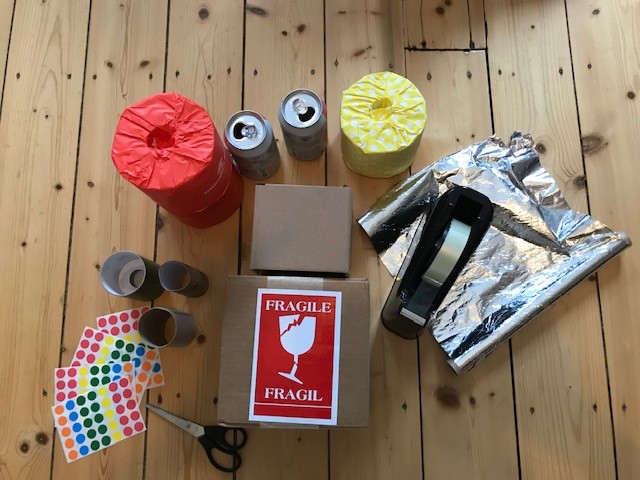
We have worked with the MakerFutures project to create an activity for children to design and build a robot from recycled materials. Children will identify a role and produce a profile for their robot, which explains how they help the environment, using different languages.
Aim
The aim of this activity is for children to design and build a robot from recycled materials. Children will identify a role and produce a profile for their robot, which explains how they help the environment, using different languages.
Intended Learning Objectives
Design a robot that will play a role in helping the environment in different parts of the world.
Learn to build a robot using cardboard and recycled materials that have been collected in the classroom and at home.
Create a profile for the rubbish robot and produce a short film to present the robot using different languages.
All children will be able to:
- Build a robot using cardboard / cardboard and aluminium cans.
- Write a profile for their robot, which includes information about their role in helping the environment and that include words in another language.
Some children will be able to:
- Develop the basic robot model to include additional features and / or decoration.
- Present their robot profile in a short film using one or more different languages.
Activity
Introduction
This lesson is focused on building robots from rubbish and creating an identity for them, an important aspect of which is explaining how the robot will contribute to overcoming an environmental challenge. The robots can be designed to live and work in any part of the world.
Exploration
In the exploration stage the children will investigate and identify:
- Environmental issue (anywhere in the world) that is of concern to them. The environmental issue could perhaps connect different aspects of their own identity, for example, plastic pollution in Sheffield (where they live) and the Indian Ocean (links to their heritage / where members of their extended family live);
- Solution to help the environment – what would improve the situation? Children should be encouraged to think as creatively as possible and use their imaginations, as the solution will be addressed by a robot that they will design.
- Designing a robot: children can follow the five steps OR if this is too structured, focus on exploring their own ideas:
- FUNCTION 🡪 what does your robot need to be able to do?
- ENVIRONMENT 🡪 where will your robot live – in one or more places? What is the environment like – desert, tropical, forest, up in the mountains or in a city?
- FEATURES 🡪 will your robot have features – do they need to see, smell, taste, touch to do their job?
- MATERIALS 🡪 which materials will survive the environment your robot lives in? Do they need to be visible or camouflaged?
- COMMUNICATION 🡪 how will they communicate? Will they use words or signals? Will they speak a language or multiple languages?
Children source information in any language of their choosing. If children don’t speak other languages, they can search for keywords in different languages. This can be influenced by where the robot lives in the world, the environmental challenge, or who the robot needs to communicate with.
Skill Builder
This stage of the activity involves learning the skills required to build a robot from cardboard and recycled materials. The two YouTube videos provide tutorials that clearly demonstrate easily replicable techniques to attach cardboard to build a robot.
Children can identify the different techniques used to work with the cardboard to build a robot. The techniques can be collated into a ‘Working with Cardboard’ design board, which labels the different techniques in English, as well as any other languages used by the children. The design board serves as a reminder of the techniques and possibilities available to them when working with this material, as well as a visual reminder and record of the diversity of languages spoken in the classroom. The process of sharing can be used to identify similarities and differences between words in the range of languages spoken. At the end of this stage children will be able to build a template robot that can be developed during tinker time, based on the purpose and identity of their robot, which children explored during stage one.
Tinker time
In the final stage, children can adapt their robot using methods identified on the ‘Working with Cardboard’ design board and additional art supplies to help create an individual identity, as well as produce an accompanying profile. The profile can be written in English and / or different languages. Children could produce a short film presenting their ‘rubbish robot’ and its purpose and / or record their robot’s voice (using an ipad) in one or more languages.
Materials
- Variety of cardboard packaging.
- Plastic packaging – bottles / bottle tops.
- Tins.
- Selection of art supplies for decorating the robots.
- Cord.
- Scissors.
- Glue.

Have you used this activity?
Let us know how it went by leaving some feedback.